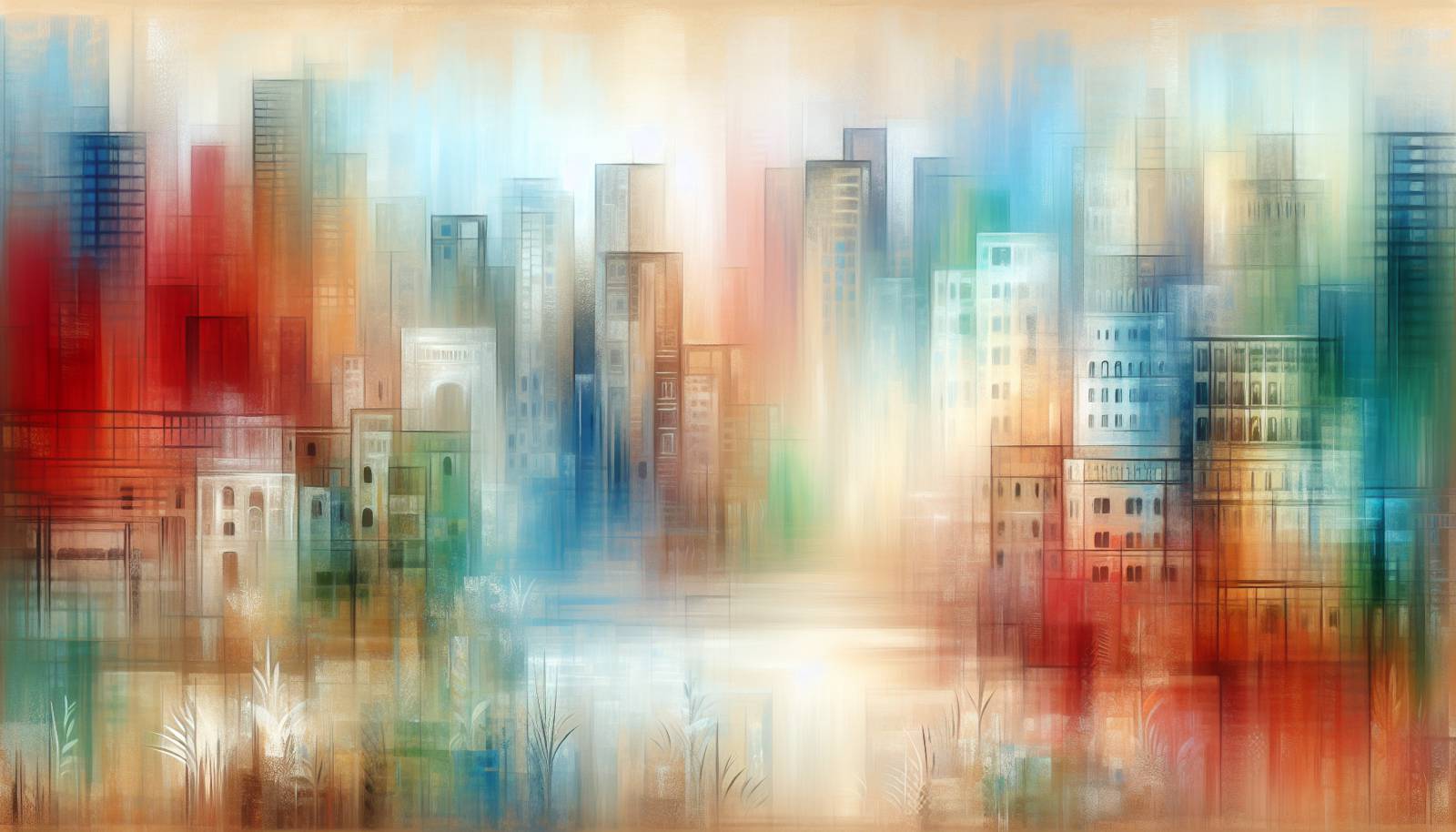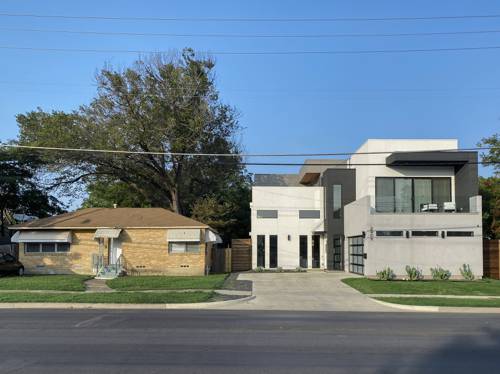
FAQ About The Impact of Gentrification on Urban Cultural Landscapes

What is gentrification and how does it impact urban cultural landscapes?
Gentrification refers to the transformation of a neighborhood through the influx of more affluent residents, leading to increased property values and rental costs. This often results in the displacement of lower-income residents and changes in the cultural dynamics of the area. Urban cultural landscapes are affected as original local businesses may be replaced by new, higher-end stores, altering the traditional artistic and communal atmosphere. Additionally, cultural spaces that once catered to the original community might shift to attract the new demographic, leading to a loss of cultural heritage and diversity.

How does gentrification affect artists and art communities in urban areas?
Artists and art communities are often among the first to feel the impact of gentrification. Rising rents and property values make it difficult for artists to afford studio spaces, leading to displacement. As wealthier populations move in, some art galleries and cultural institutions may pivot to audience preferences that favor commercially viable art over experimental or community-focused projects. This can dilute the artistic diversity and diminish the role that art plays in social critique and community engagement.

Can gentrification have any positive impacts on urban cultural landscapes?
While gentrification is often critiqued for its negative impacts, it can also bring some positive changes. Higher investments in infrastructure can enhance public spaces and attract resources that improve safety and services in the area. These changes can lead to increased tourism and the revitalization of certain cultural heritage sites. However, these benefits often disproportionately favor the newcomers rather than the long-standing residents, who may be pushed out.

What is cultural displacement in the context of gentrification?
Cultural displacement occurs when the existing cultural expressions, practices, and community composition are altered or removed due to the influx of different socioeconomic groups. This change often results in the erosion of cultural identity and the loss of historical memory associated with a neighborhood. As a result, local traditions, languages, and community spaces that defined the area may be diluted or vanish entirely, affecting its cultural landscape.

How do communities resist the cultural impacts of gentrification?
Communities often engage in various forms of resistance to counter the impacts of gentrification. Grassroots organizations may promote policies to protect affordable housing and support local businesses. Cultural events and festivals can be organized to celebrate and preserve local heritage. Additionally, collaborations between residents, artists, and activists can raise awareness and create platforms to discuss and challenge these changes. Public art and murals are also used as tools to maintain cultural visibility and assert community presence.

What role do local governments play in managing gentrification's impact on cultural spaces?
Local governments can significantly influence the impact of gentrification on cultural spaces through policy and regulation. By enforcing zoning laws, they can protect spaces for cultural and community use. Governments may also offer incentives for developers to include affordable housing and preserve historical sites. Additionally, they can support grants and programs for local artists and cultural organizations to ensure they remain integral to the community despite economic pressures.

Are there examples of cities successfully mitigating the negative impacts of gentrification?
Some cities have implemented strategies to mitigate the adverse effects of gentrification. For instance, policies that focus on mixed-income housing developments can help maintain diversity. Initiatives like community land trusts have been successful in places like Burlington, Vermont, where land is kept in trust to ensure affordable housing and community control. Additionally, cities like London have developed strategies to elevate the community's voice in urban planning processes, ensuring more equitable development outcomes.

How do rising property values from gentrification affect cultural institutions?
Rising property values are a double-edged sword for cultural institutions. On one hand, they may receive increased funding and attention from wealthier patrons or donors interested in supporting cultural assets. On the other hand, the institutions themselves might face higher operational costs and potential displacement. If the new community demographic shifts in taste, institutions may also alter programming to stay financially viable, risking the integrity of culturally significant collections or performances.

What is the relationship between gentrification and urban public spaces?
Gentrification can reshape urban public spaces, improving amenities and safety while also introducing exclusivity. Parks and open areas might see enhancements, attracting more people and increasing property desirability. However, these changes might cater primarily to the tastes and lifestyles of newer, more affluent residents, rather than the established community. Original users of these spaces may feel discouraged or unwelcome, altering the social dynamics and accessibility of such areas.

How can urban planning be used to address the challenges of gentrification?
Urban planning plays a crucial role in addressing the challenges posed by gentrification. It involves creating policies that promote equitable development, such as enforcing affordable housing quotas and safeguarding small businesses. Planners can also prioritize the preservation of cultural landmarks and facilitate community input in the decision-making process. Implementing inclusionary zoning, where developers are required to include a certain percentage of affordable housing, can help balance community composition.

What impact does gentrification have on local small businesses and shops?
Local small businesses are often hit hard by gentrification. Increased rents can drive out longstanding, locally-owned shops, replaced by higher-end retail that caters to new residents. This shift can erode the unique character and economic diversity of neighborhoods. However, some businesses may adapt by tapping into the changing demographics, although this often involves changing their product offerings and business models significantly.

How does gentrification influence the diversity of cultural events in urban neighborhoods?
Gentrification can lead to a shift in the type of cultural events held in affected neighborhoods. New demographics may influence event organizers to introduce programming that resonates with them, potentially sidelining events that were historically significant to the original community. This could reduce the overall cultural diversity and potentially lead to the commercialization of local traditions, diminishing their authenticity.

Can gentrification lead to conflict in urban cultural landscapes?
Yes, gentrification can lead to conflicts as different community members may have opposing views on neighborhood changes. Long-standing residents might resist new developments they perceive as threats to their cultural identity and community fabric. Tensions can arise between newcomers and original inhabitants over the use of public spaces, cultural programming, and property development, sometimes resulting in protests or advocacy campaigns to preserve community integrity.

What is the role of cultural tourism in the process of gentrification?
Cultural tourism can both contribute to and be affected by gentrification. While it brings economic benefits by attracting visitors interested in local culture, it can also drive up property values and living costs, accelerating gentrification. This may lead to a homogenized cultural experience tailored to tourists rather than authentic local expressions. Conversely, sustained tourism might help fund the preservation of certain cultural sites and practices, provided it is managed inclusively.

Are there policies that help preserve cultural identities amidst gentrification?
Policies aimed at preserving cultural identities amidst gentrification typically focus on community involvement and protection of cultural spaces. Instruments like heritage conservation districts ensure the maintenance of historically and culturally significant buildings. Local governments can also support grants for cultural programming and safeguard affordable housing to maintain demographic diversity. Involving the community in urban development decisions can also help maintain cultural identities.

How does gentrification affect indigenous cultural landscapes in urban settings?
Gentrification can have profound impacts on indigenous cultural landscapes by altering places of historical and spiritual significance and displacing indigenous populations. This can lead to the erasure of indigenous cultural practices and historical narratives within urban settings. Efforts to mitigate these effects include advocating for land rights, promoting indigenous-led urban planning, and ensuring representation in cultural and historical preservation efforts.

Is there a connection between gentrification and urban spatial justice?
Urban spatial justice refers to the fair and equitable distribution of spaces and resources within a city. Gentrification often exacerbates inequalities by prioritizing development for wealthier classes, overshadowing the needs of lower-income or marginalized groups. This can lead to spatial injustice, where access to housing, cultural spaces, and amenities is unequally distributed. Addressing these issues involves policies that emphasize inclusivity, affordability, and the protection of community rights in urban planning.

How does gentrification affect community cohesion in urban neighborhoods?
Gentrification can disrupt community cohesion by displacing long-term residents and changing the social fabric of neighborhoods. As new, often more affluent people move in, social networks that were integral to community identity and support systems may fragment. This can lead to a loss of communal bonds and a sense of disconnection among remaining residents. Efforts to maintain community cohesion can include initiatives that foster inclusive community engagement and multicultural events that bridge old and new residents.

What tools or methods are used to study the impact of gentrification on urban cultural landscapes?
Several tools and methods are used to study the impact of gentrification on urban cultural landscapes, including qualitative interviews, ethnographic studies, and cultural mapping. Quantitative data analysis involving demographic, economic, and real estate statistics provides insights into changes in population and property markets. Participatory research methods also involve community members to ensure that studies reflect local perspectives and gather comprehensive, nuanced insights.

How do cultural landscapes influence the identity of an urban area?
Cultural landscapes significantly influence the identity of an urban area by reflecting the history, traditions, and social dynamics of its inhabitants. These landscapes encompass physical spaces like historic buildings and public art, as well as intangible aspects like cultural practices and neighborhood festivals. They create a sense of place and belonging for residents and visitors alike, contributing to the unique character and appeal of urban areas.
